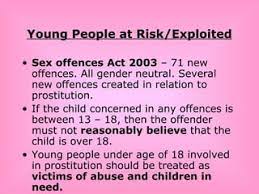Introduction:
Prostitution is known as one of the world’s oldest professions, an industry that thrived amid secrecy and taboo. However, in today’s society, it has taken on a new aspect that is threatening the well-being of young people – abuse through prostitution. It is a pressing issue that many countries are grappling with, as child exploitation and sexual abuse continue to grow in alarming proportions. This article delves into the various factors contributing to this phenomenon and exposes the vulnerability of young people caught in this dangerous cycle.
The Risk Factors:
1. Poverty: Often, the lack of opportunities and financial insecurity pushes young people, especially from underprivileged communities, into prostitution. Desperately seeking ways to make ends meet, they fall prey to pimps and traffickers who exploit their poverty.
2. Runaway teens and homelessness: Teenagers who have fled from dysfunctional or abusive homes become susceptible to prostitution, as their lack of support forces them into risky situations that endanger their safety.
3. Drug addiction: Substance abuse can lead to a vicious cycle wherein young people depend on prostitution to fuel their addiction. Unfortunately, this also exposes them to various other risks such as physical abuse and contracting sexually transmitted diseases (STDs).
4. Peer pressure or grooming: Adolescent vulnerability can be exploited by older “friends” or acquaintances who manipulate them into prostitution through seemingly benign offers of hospitality, drugs or money.
5. Online predators: The digital age has made it easier for both prostitutes and clients alike to maintain anonymity while conducting their business online. Pimps or traffickers often target vulnerable youth on social media platforms, gaming sites or chatrooms and lure them with false promises.
The Consequences:
Victims of abuse through prostitution suffer emotionally, mentally, and physically. They are likely to face several challenges which include:
1. Mental health disorders: Depression, anxiety, or post-traumatic stress disorder (PTSD) can manifest in these young individuals due to their traumatic experiences in the sex trade.
2. Physical health issues: Exposure to dangerous situations, such as unprotected sex with multiple partners, can result in unwanted pregnancies and contracting STDs.
3. Substance abuse: Many victims turn to drugs or alcohol to cope with their painful experiences, thus exacerbating their circumstances.
4. Legal troubles: Involvement in prostitution often leads to run-ins with law enforcement, affecting the individual’s future prospects and opportunities.
5. Stigma and societal rejection: The social stigma associated with this dark industry may lead victims to feel isolated and unworthy of support or assistance.
Conclusion:
The alarming rise in young people at risk of abuse through prostitution necessitates immediate intervention. Governments, non-profit organizations, and communities need to work together to implement preventive measures such as education on the dangers of the sex trade and providing comprehensive support systems for at-risk youth. By creating awareness and taking collective action, society must prioritize the protection of these vulnerable children and adolescents from a life filled with despair and danger.





